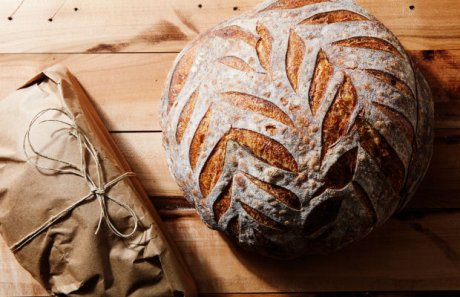How to Keep Bread Fresh
While there are many options for storing those beautiful bakery loaves (that, since they contain only flour, yeast, and water, are at risk of becoming stale almost immediately), some of these options are better than others.
So here's the best way to keep bread fresh—plus a few backup plans.
1. Freeze Your Bread
Freezing bread is by far the best way to preserve it in the exact state you bought it in: crusty crust, soft interior. Freezing greatly slows down the staling process, and—bonus!—reheating the bread in an oven or toaster actually re-gelatinizes the starches and makes the bread springy and chewy again. Place your bread in a sealed zip-top bag, pushing out as much air as possible, and pop it in the freezer. When you're ready to eat, take it out and put it in the oven to revive it. Bread can be frozen for two to three months.
Oh, and here's a tip if you like toast: ****slice the bread before you freeze it, then pop the individual slices into the toaster to defrost them.
Actually, even if you don't want slices, it's a good idea to portion the loaf into a few larger pieces if you don't plan on eating the entire loaf in one sitting. Defrosting and re-freezing will only hurt a loaf of bread.
2. Store Your Bread in a Breadbox
It's no freezer, but a good breadbox will create an environment that balances humidity (which you want for a soft interior) and the air circulation (which you need to maintain a crusty crust). A large box is better because it will allow for maximum air circulation. Some recommend ceramic, but there are also bamboo and enamelware varieties to try. The more bread you put in the bread box, the higher the humidity level, so don't overfill the box. And avoid storing the bread in a paper bag in the bread box—this will trap moisture and just destroy the crust.
3. Wrap Your Bread in Foil or Plastic
Storing your bread on the countertop in a plastic bag or wrapped in foil will help keep it from going stale, but be warned: the crust will suffer due to trapped moisture. (Toasting the bread will bring some of the crust's crunchy texture back.)
4. Don't Refrigerate!
The refrigerator, that miraculous 20th century food preserver that keeps our celery crisp and our milk chilled, is actually the last place your bread belongs. According to Harold McGee, author of On Food & Cooking, refrigerated bread can stale up to six times as fast as bread on the counter. That is, unless you're looking to store a commercial loaf of bread, which will have preservatives that keep it "fresh." In this case, keeping the bread in the refrigerator is a good choice because it will prevent mold and dryness.
5. Note: Not All Breads Stale the Same
Breads with added fat, like challah and brioche, will take longer to go stale, whereas a baguette—because of its narrow shape and lack of fat—is an extreme case and will go stale very rapidly. It should really be eaten the day it's baked.
And, you know what? Despite your best efforts, bread will occasionally go stale. The great news is that there are actually plenty of delicious things to do with bread that's past its prime. Make this grill-friendly panzanella! Make pappa al pomodoro! Or just make a batch of croutons, which you don't have to worry too much about being stale—because they basically already are.
